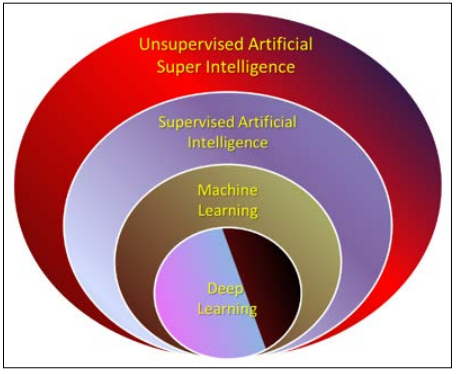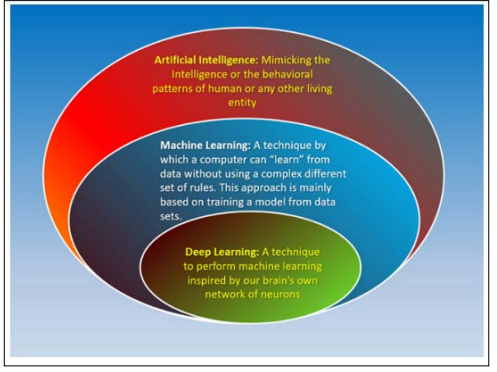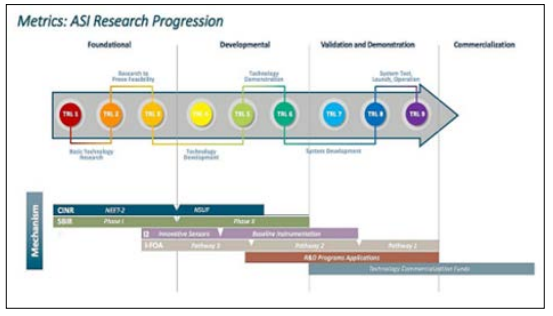Author(s): <p>Bahman Zohuri*, Rahele Zadfathollah, Seyed Kamal Mousavi Balgehshiri and Ali Zamani Paydar</p>
The use of Artificial Intelligence (AI) in nuclear in-core instrumentation and control has the potential to improve the safety and efficiency of nuclear power plants. In-core instrumentation refers to the sensors and other measurement devices that are used to monitor the conditions inside the nuclear reactor core, such as temperature, pressure, and neutron flux. These measurements are used to control the operation of the reactor and ensure that it is operating within safe limits from Probabilistic Risk Assessment (PRA) point of view. One way that AI can be used in nuclear in-core and out-core Instrumentation and Control (I&C) as well as Instrumentation and Measurement (I&M) is by analyzing the data from these sensors in real-time and using machine learning algorithms to identify patterns and trends. This can help operators to detect potential problems or anomalies before they become critical, allowing them to take proactive measures to prevent accidents or malfunctions. AI can also be used to optimize the operation of the reactor by analyzing data from past operations and using this information to develop more efficient control strategies. For example, AI algorithms could be used to identify the most effective combination of control parameters to maintain a stable and safe reactor operation, while minimizing the use of fuel and other resources. Overall, the use of AI in nuclear In-core instrumentation and control has the potential to improve the safety, efficiency, and reliability of nuclear power plants. As AI technology continues to advance, we can expect to see more widespread adoption of these technologies in the nuclear industry.
In the past few decades, the technology of Artificial Intelligence (AI) systems along with its integrated components such as Machine Learning (ML) and Deep Learning (DL) has come a long way and is continuously getting enhanced from a weak AI to Super Artificial Intelligence (SAI) as depicted in Figure 1 with the holistic description of each of these different infrastructures for it. With the holistic description of each of these different infrastructures for it [1].

Figure 1: Different Types of Artificial Intelligence
As we stated, Figure 1 presents the definition and scope of different types of Artificial Intelligence and are listed below:
Artificial Narrow Intelligence (ANI) is also known as “Weak” AI. This is just the first step to design and apply Artificial Intelligence to our world! On the other hand, what we see today as the result of development by different companies around the world is ANI. Every sort of Machine Intelligence that surrounds us today is Narrow AI. Google Assistant, Google Translator, Siri, and Factory Robots are all examples of limited AI. The scope of ANI is to perform only "Single Tasks" on a "specific data set" This can be done offline or on a real-time or near real-time basis.
The Artificial General Intelligence (AGI) is also known as “Strong” AI. This is the “Second Phase” to design and apply Artificial Intelligence to our world. The best example of Artificial General Intelligence or “AGI” is what we see in Intelligent Robots who can “interact” with us and learn. “Sophia” developed by Hansen Robotics is the best example of AGI and you can see how far we are from human like intelligent robots! AGI (when fully developed) can successfully perform any intellectual task that a human can. The best example of a developed AGI robot is the iRobot Movie.
Artificial Super Intelligence (ASI) is the ultimate level of Artificial Intelligence beyond the capabilities of the human brain! This is the “Third and last phase” of designing and applying Artificial Intelligence to our world. Oxford philosopher Nick Bostrom defines Super Intelligence as “Any intellect that greatly exceeds the cognitive performance of humans in virtually all domains of interest”.
In general, an AI System is combination of AI, ML and DL combined and integrated as a complete system and its infrastructure levels, as illustrated in Figure 2.

Figure 2: Schematic of Artificial Intelligence System Levels Infrastructure
Defining each of these levels as illustrated in Figure 2 is beyond the scope of this article and this short review, and more granular information can be found in the book by Zohuri and Zadeh [1].
Advanced Reactor Concepts (ARCs): A New Nuclear Power Plant Perspective for Energy gives engineers and nuclear engineering researchers a comprehensive tool to get up-to-date on the latest technology supporting Generation IV nuclear fission plant systems. After describing a brief history, alternative technology is discussed, such as electromagnetic pumps, heat pipes as control devices, and the integration of Nuclear Air-Brayton Combined Cycles, which help nuclear plants provide dispatchable electricity to the grid and heat to the industry [2]. Packed with examples of all the types, benefits, and challenges, the book by Zamani Paydar et al. delivers the go-to reference engineers need to advance safe nuclear energy as a low-carbon option and the Design-To-Cost (DTC) point of view as well [3-4].
With the new Small Modular Reactors of Generation IV (GEN- IV), comes the safety aspect of their operation from the perspective of Probability Risk Assessment (PRA) [5-6].
Advanced Small Modular Reactors (aSMRs) are a way to provide safe, clean, and affordable nuclear power options. The advanced SMRs currently under development in the U.S. represent a variety of sizes, technology options, and deployment scenarios. These advanced reactors, envisioned to vary in size from a couple of megawatts up to hundreds of megawatts, can be used for power generation, process heat, desalination, or other industrial uses. In-depth chapters describe how advanced SMRs offer multiple advantages, such as relatively small size, reduced capital investment, location flexibility, and provisions for incremental power additions. SMRs also offer distinct safeguards, security, and nonproliferation advantages. The authors present a thorough examination of the technology and defend methods by which the new generation of nuclear power plants known as GEN-IV can safely be used as an efficient source of renewable energy [6].
With the trend toward pushing these aSMRs comes new technologies that require operational safety of these reactors, thus requiring in-core instrumentation and control (I&C) to satisfy the PRA aspect of these reactors' operations. With these I&C, a lot of data is generated in real time that requires monitoring them in the control room, where man-in-the-loop monitors them to make the correct and appropriate decisions and to keep normal operations running 24 hours a day, seven days a week during the 360-day period [7-8].
The advancements and improvements driven by artificial intelligence (AI) and provided to its partner, human intelligence (HI), have brought about a wide range of domains, ranging from technology and medicine to science and sociology, and many others, such as energy and its powered sources, including both renewable and nonrenewable ones. Both Fusion and Fission sources of energy for electricity production require a lot of precise measurements, and control of this instrumentation either in or out of the core in real-time withou7t AI application becomes an impossible task [9,10].
Instrumentation and Measurement (I&M) from Precision will be enhanced with AI integration and augmentation. Although the long-term goal of research in AI is to enable machines to have the same level of intelligence as animals or humans, it is important to note that the applied AI of today is not really comparable to biological intelligence. In fact, the word "intelligence" in the Applied AI of today is misleading for the common person, as it gives the person the wrong impression that he or she is dealing with an intelligent being manifested as AI [10].
An Artificial Intelligence (AI) system with its sub-systems of Machine Learning (ML) and Deep Leering (DL) as illustrated in Figure-3, is so futuristic that we as humans need it due to massive data in the form of Big Data (BD) and Data Analytics (DA), thus Data Predictive (DP) for a better, normal, and safe operation.

Figure 3: Presentation Artificial Intelligence in Relation to Machine Learning and Deep Learning
Artificial Intelligence has grabbed the center stage of business intelligence, despite having been around for decades. Due to the growing pervasiveness of data, the scalability of cloud computing, the availability of AI accelerators, sensors, and process
Artificial Intelligence has grabbed the center stage of business intelligence, despite having been around for decades. Due to the growing pervasiveness of data, the scalability of cloud computing, the availability of AI accelerators, sensors, and processors, and the sophistication of the ML and DL algorithms, it has become the dominant talk of the industry and the basis for the next- generation revolution in IT. A company like IDC Technology 6 predicted that by 2019, 40% of Digital Transformation (DX) and big data initiatives will use AI services; by 2021, 75% of commercial enterprise apps would use AI, over 90% of consumers would interact with customer support bots; and over 50% of new industrial robots will leverage AI. ors, and the sophistication of the ML and DL algorithms, it has become the dominant talk of the industry and the basis for the next-generation revolution in IT. A company like IDC Technology 6 predicted that by 2019, 40% of Digital Transformation (DX) and big data initiatives will use AI services; by 2021, 75% of commercial enterprise apps would use AI, over 90% of consumers would interact with customer support bots; and over 50% of new industrial robots will leverage AI.
Generally, the main opportunities for AI to achieve a positive impact on the nuclear power industry can be grouped into the areas listed below. In all of these, AI offers the capability of leveraging massive amounts of complex data in ways that were previously impossible to do by humans or with more traditional techniques. In addition, AI enables the capture, codification, and retention of human expertise to support robust, repeatable, and explicable machine-led decisions [11].
With today's growing and overwhelming volume of information, analyzing the massive amounts of data that contain this information is becoming extremely difficult. It makes it difficult and inconvenient to implement an appropriate decision-making methodology quickly enough to be considered "real-time. “The demand for real-time processing of information and related data, both structured and unstructured, is on the rise, which consequently makes it harder and harder to implement correct decision-making at the enterprise level to keep the organization robust and resilient against either man-made threats or natural disasters [8,12]. That is why, as illustrated in Figure 4, integrating AI into the decision-making loop by augmenting it with humans in the loop becomes necessary [13].

Figure 4: Artificial Intelligence Acting as a Human
Neural networking and fuzzy systems combined to show how Artificial Intelligence (AI) can be driven by these combinations as a trainable system that is more dynamic than static when it comes to machine learning and deep learning languages to deal with both adversary and friendly events in real-time. Dynamic systems of AI that are built around such an innovative approach allow the robots of the future to be more adaptive with mechanisms such as principal adoption, self-organization, and the convergence of global stability from the viewpoint of business and intelligence security needed in today's cyber world [14].
To deal with uncertainty, vagueness, and imprecision, Lofti A. Zadeh, et. al. introduced fuzzy sets and fuzzy logic. In ref., fuzzy classification is used to improve managerial decisions by extending portfolio analysis, scoring methods, customer segmentation, and performance measurement. As an integral part of the book, case studies show how, fuzzy classification, with its query facilities, can extend customer equity, enable mass customization, and refine energy marketing campaigns [15,16].
Advanced Sensors and Instrumentation and Challenges While I&C technologies have provided decades of safe operation for the current nuclear fleet, the I&C systems in use have not incorporated many of the advances in sensor materials, electronics, communication, controls, and data analytics that have become available over the past 40 years. In addition to the challenges associated with maintaining older systems, there is a financial challenge to stay competitive with other energy sources that are leveraging these advanced technologies. The current nuclear industry as well as the advanced reactor designers are looking to develop cost- competitive technology solutions. There are challenges that need to be addressed when applying technologies in a nuclear facility due to both unique environments and regulatory commitments.
Data analytics technologies, including Machine Learning and Artificial Intelligence (ML/AI) techniques, are enabling technologies for advanced nuclear power systems.
In 2012, the Department of Energy's Office of Nuclear Energy (DOE-NE) initiated the Nuclear Energy Enabling Technology (NEET) Program to conduct research, development, and demonstration (RD&D) to support existing, new, and advanced reactor designs, and fuel cycle technologies. The NEET Program has spurred innovation in the fields of sensors and instrumentation, advanced manufacturing methods, and cybersecurity [17].
The NEET ASI program’s main research areas discuss the critical technology gaps in the nuclear industry’s monitoring and control capabilities.
Technology Readiness Level (TRL) is a key concept and needs to be generally understood. Figure 5 below shows an overview of the TRL progression.

Figure 5: Technology Readiness Roadmap
(Source: Idaho National Laboratory)
The concept of technology readiness assessment is helpful for the classification of instrumentation technology as part of the program strategy. A technology readiness assessment evaluates technology maturity using the Technology Readiness Level (TRL) scale. It has recently been adopted to advance fuels and materials in advanced reactors and new concepts of fission and fusion technology. The NEET ASI program objective is to mature
machine learning, and artificial intelligence technology to TRL 6, which is “demonstration of the technology in the relevant environment” [17].
As we know, AI can contribute to nuclear security and safety in several ways. There can be lots of uses for it, such as in the processing of data from radiation detection systems to enhance the detection and identification of nuclear and other radioactive material. It can be applied to analyze data from physical protection systems to improve the detection of intruders. It can also help spot anomalies that could indicate a cyberattack on a nuclear facility. Furthermore, in the realm of radiation protection, the integration of AI in safety standards-related software can reinforce the protection of the millions of workers with occupational exposure in medicine, construction, mining, shipping, agriculture, and nuclear power.
AI has a lot of potential for developing cutting-edge computer security techniques for nuclear power plants that can find and stop attacks both now and in the future.
AI techniques provide various ways to learn from data and operations, including identifying patterns and anomalies in the vast quantities of information related to the sensing and control of nuclear processes. Cyberattacks on instrumentation and control (I&C) systems can cause physical damage to facilities and may be used as sabotage targets. This shows the need for both physical and computer security solutions that can find evidence of both hostile actions and the gradual process changes that may be signs of an ongoing cyberattack [16].
The in-core and out-of-core nuclear instrumentation control and measurement are excellent, allowing these reactors to operate normally in terms of safety and design.
In the case of In-core nuclear instrumentation and control, the In- core instrumentation system measures neutron flux distribution and temperatures in the reactor core.
The purposes of the In-core instrumentation system are to provide detailed information on neutron flux distribution and fuel assembly outlet temperatures at selected core locations. The In- core instrumentation system provides data acquisition and usually performs no protective or plant operational control functions. The In-core instrumentation system includes:
The In-core neutron monitoring system consists of In-core detectors with sufficient sensitivity to measure localized neutron
flux distribution variations within the reactor core. It must be noted that in power reactor cores, the flux distribution and power distribution are significantly influenced by many factors. Therefore, the temperature in an operating reactor varies from point to point within the system. Consequently, there is always one fuel rod and one local volume hotter than all the rest. Peak power limits must be introduced to limit these hot spots. The peak power limits are associated with a "boiling crisis" and the conditions that could cause fuel pellets to melt. The incore neutron flux monitoring system provides detailed data on neutron flux distribution and, as a result, the margins for these peak power limits.
As far as Out-core instrumentation is concerned, these instrumentations are also needed to measure and process data during normal operation, and the PRA perspective also requires accurate measurements within the control room and interior of the building containing the reactor core.
Bear in mind that future and commercial fusion reactors will also encounter similar monitoring of their instrumentation, where Human Intelligence (HI) and Artificial Intelligence (AI) will be at work.
This is where the integration and augmentation of artificial intelligence systems is required for the processing of these massive datasets generated by omni-direction.
